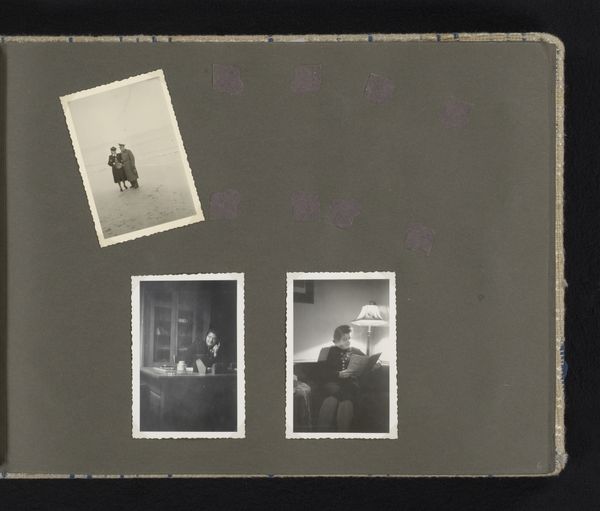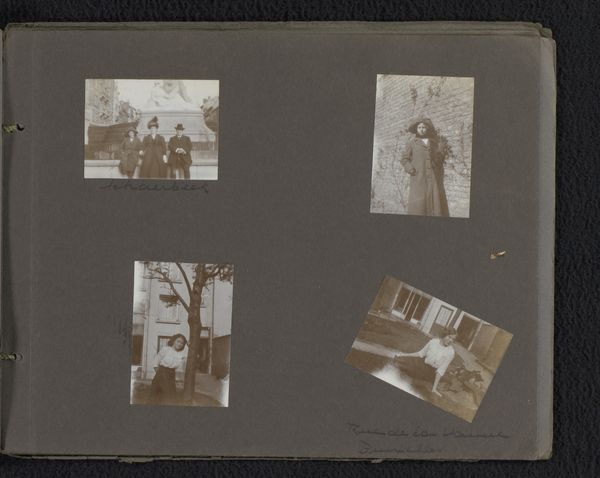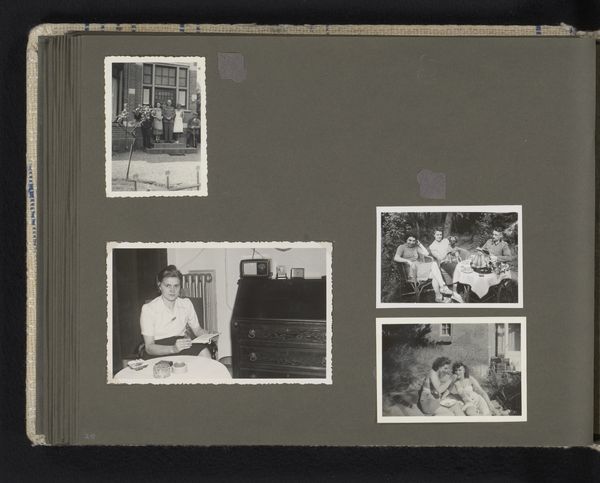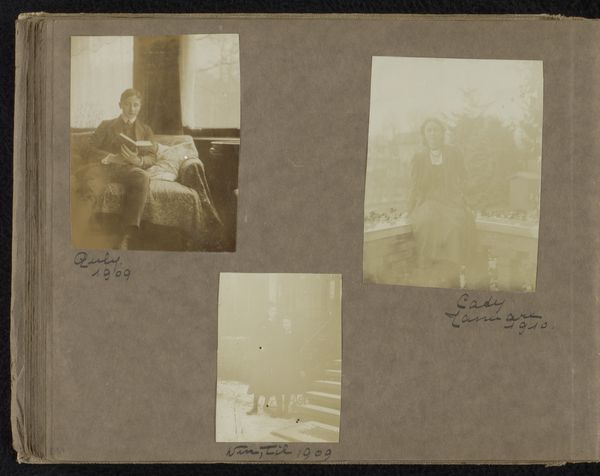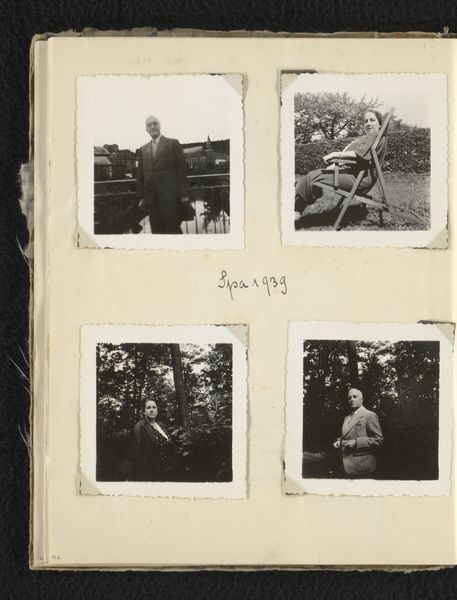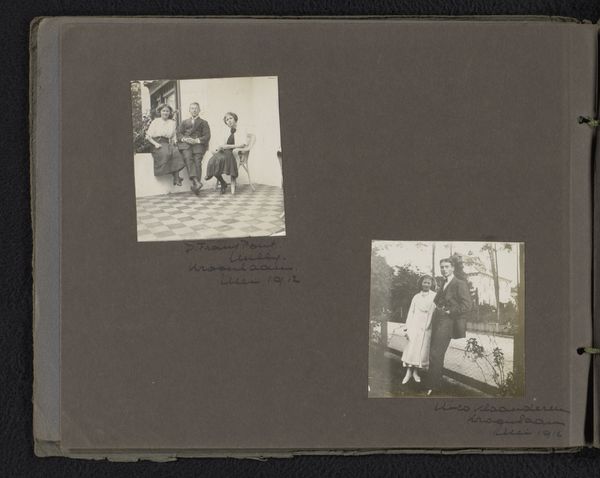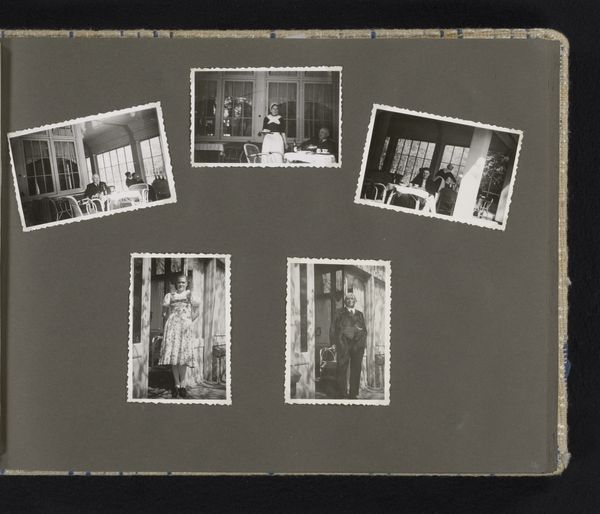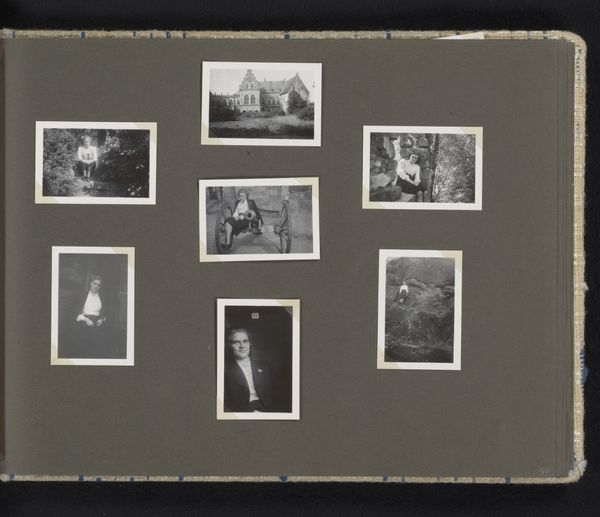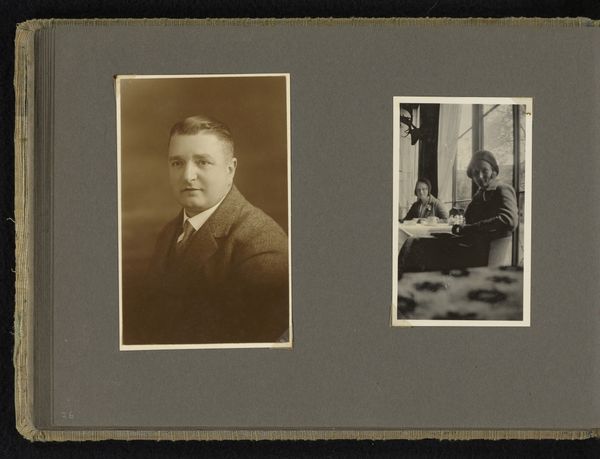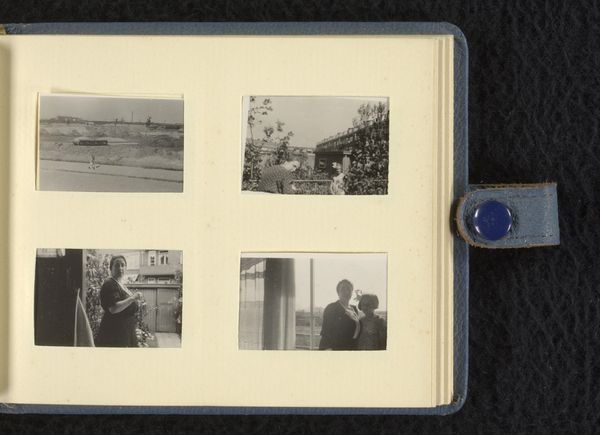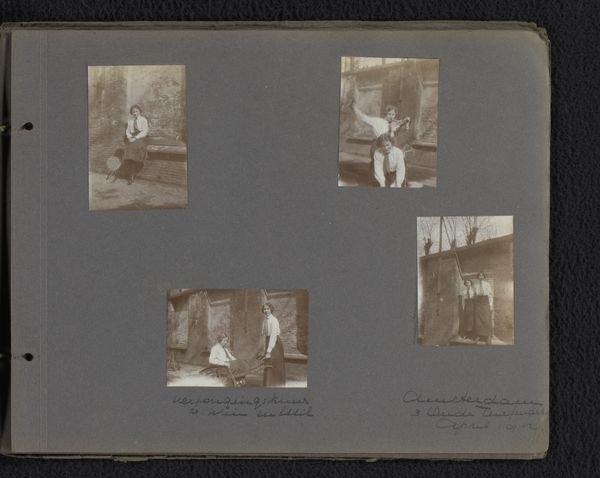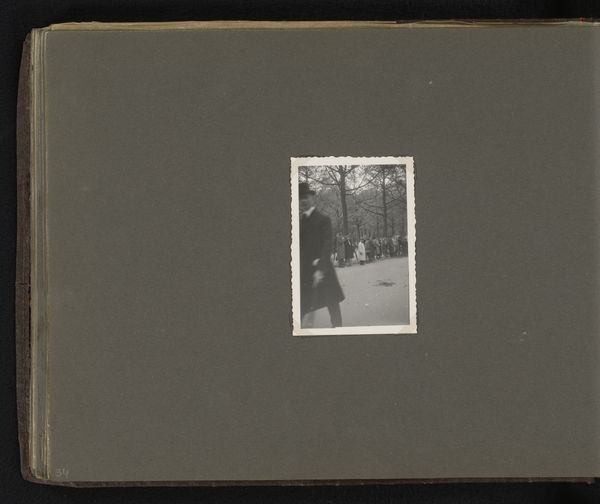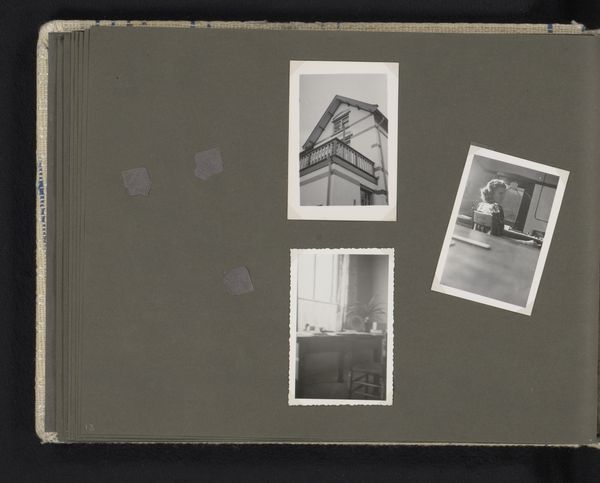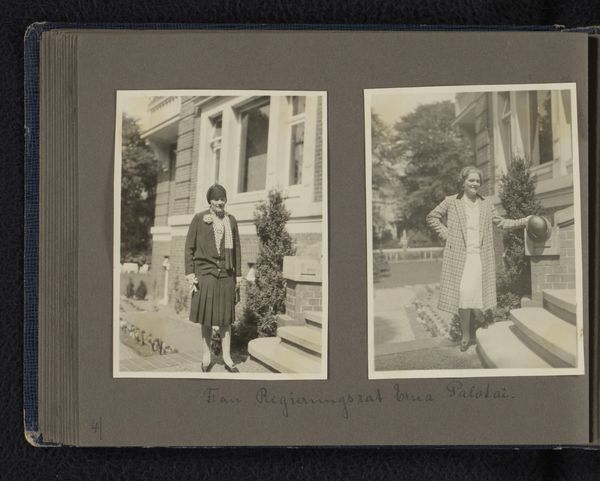
Portret van Herman Besselaar met een boek in de hand en een portret van Berti Hoppe op straat c. 1930
0:00
0:00
photography, gelatin-silver-print
#
portrait
#
still-life-photography
#
muted colour palette
#
book
#
muted light
#
photography
#
gelatin-silver-print
#
muted colours
#
muted colour
Dimensions: height 236 mm, width 287 mm
Copyright: Rijks Museum: Open Domain
Curator: This gelatin-silver print, dating from around 1930, is titled "Portret van Herman Besselaar met een boek in de hand en een portret van Berti Hoppe op straat," which translates to "Portrait of Herman Besselaar with a book in his hand and a portrait of Berti Hoppe on the street." It's a rather fascinating combination, wouldn’t you agree? Editor: Absolutely. My initial impression is one of striking contrasts. There's this intimate, book-lined study on the left, evoking intellect and perhaps privilege, versus the outdoor scene—the lone woman almost swallowed by the bleak, public space. What kind of statement is being made by pairing these? Curator: Contextually, understanding Hoppe's position as a woman photographer in the early 20th century helps us read into it. This wasn't merely a physical separation of settings, but potentially symbolic of gendered access and artistic visibility. What institutional structures afforded Besselaar the comfort of his study, while Berti, potentially the artist herself, navigates the world? Editor: It really poses questions around space, both physical and intellectual. Did these individuals even occupy equal standing in the art world or society? Besselaar appears centered and almost self-assured in a conventional, domestic sphere, his portrait speaking volumes about expectations around masculine scholarly pursuits. Hoppe’s, by comparison, has this... vulnerability? Curator: Yes, but I wonder if that 'vulnerability' is an imposition of our contemporary gaze? We must remember to ask if Hoppe perceived herself as 'vulnerable' or, alternatively, bravely occupying space despite societal restrictions, her own presence in the outdoor photo functioning as a claim to visibility. What is it to claim agency through self-representation when your gender is so politicized? Editor: It makes me reconsider that ‘vulnerability’ as perhaps resilience or defiance then. There's a deliberate stillness in both images that could represent posed control over the representation, in line with portraiture practices of that time. How was Hoppe utilizing self portraiture in relationship to prevailing views? Curator: Precisely. Further institutional analysis reveals the politics around photography exhibited within artistic and even cultural platforms at this time; How did certain figures access spaces while others did not? The interplay is just fascinating; by juxtaposing Besselaar’s indoor portrait with Hoppe’s solitary image on the street, there is space for us to recognize her individual resilience as a practicing woman photographer. Editor: Exactly, it’s this tension that makes this such a potent piece. It becomes a powerful dialogue on artistic, gendered identity, framed, literally, on a single page. Curator: Yes, I will never look at such juxtaposition the same. Thanks to considering art from feminist perspective it really highlights structural elements on access to arts by gender.
Comments
No comments
Be the first to comment and join the conversation on the ultimate creative platform.
